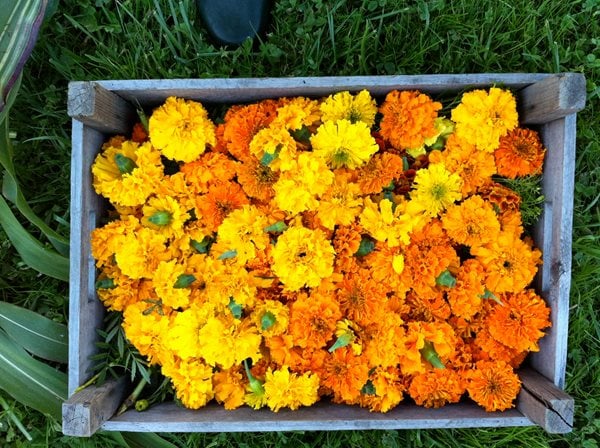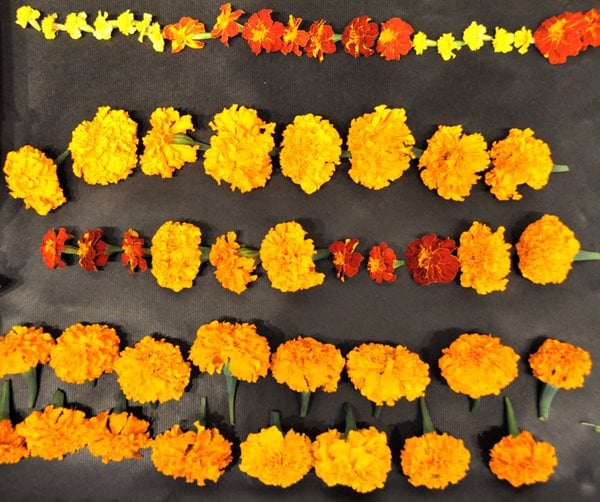DIY Marigold Garlands
See what flower farmer Katherine Anderson does with her bounty of marigolds.

I love marigolds for so many reasons, chief among them being how they glow in the dusky evening light on my farm. I also love their old-fashioned feel, that they smell like electricity to me, and the importance they carry in religious and cultural ceremonies in places like India and Burma.
I grow somewhere around 15 varieties on my farm, Marigold and Mint, from the delicious (as in on your salad) tangerine gem to the rusty french brocade. The African marigolds are tall and fluffy, like a powder puff, or sometimes shaggy, like a lion’s mane.
Making a garland is a festive way to enjoy the bounty. In August and September each year I sell buckets of loose flowers to brides and Indian temples, as well as make custom strands.
Marigold and Mint is an organic farm, a retail shop, and a studio. The farm is situated along the Snoqualmie River, about 30 miles east of Seattle and the shop is located in the Melrose Market on Capitol Hill in Seattle, Washington. Founded in 2008 by owner Katherine Anderson, Marigold and Mint reflects her lifetime love of flowers and landscapes. Trained as a landscape architect, she brings her affection for both clean and clear design and intricate patterns to Marigold and Mint.

Ideally marigolds should be strung the same day they are picked. Gather your tools: a long lei-making needle (a short and fat craft needle will do, too), some snippers, and waxed twine or nylon cord. Green floral wire works as well, and is especially good for the larger blooms which can be quite heavy.

When I started making strands, I didn’t know the "correct" way of doing it, so I lined them up sideways end-to-end (bottom row in the picture). This makes for an exceptionally thick and rich garland; typically, marigolds are strung the longways.
Once you have your marigolds, work out your color pattern.

If you prefer a thicker garland, you push the needle through the side of the neck.

For the slimmer garlands, the needle goes through the bottom and out the head. Tie a knot at the end of your twine, of course, and leave enough room on each end to create a loop for hanging.

Once strung, the flowers fit snugly together. Be mindful of the length of the neck of the flowers, and recut them before stringing if they were cut too long.

A local Hari Krishna temple will occasionally buys thousands of heads at a time from me to hang with other kinds of garlands during festival weeks. The women of the temple string them in the cafeteria, along with apples, lemons and limes!

For weddings, we also sometimes combine them with our flowers to create a garland to hang over the couple.

By the time of our harvest party in early October, the marigolds have been blooming for months. I know the frost and the end of the marigolds is just around the corner, so I let the kids at the party help themselves in the fields. Their crowns of marigolds confirm my affection for this sturdy flower, and I look forward to growing them again the next year.




